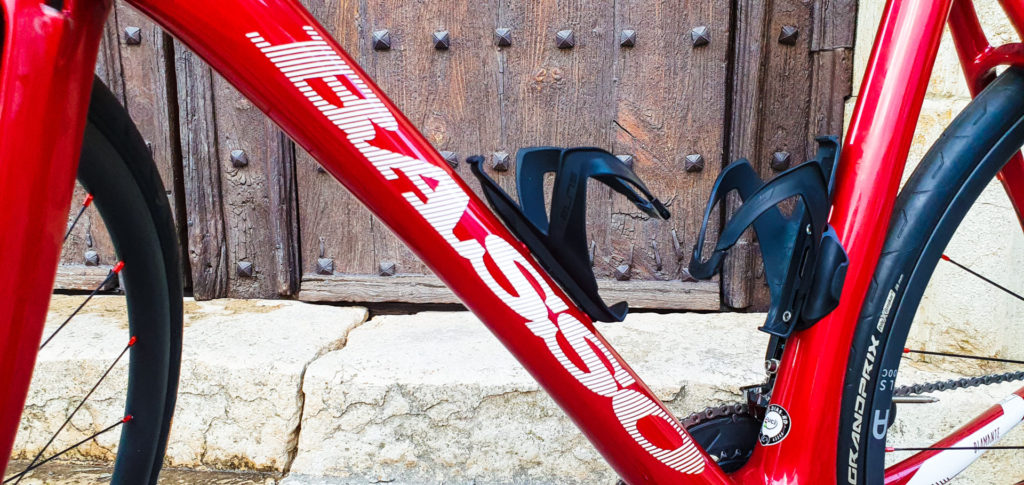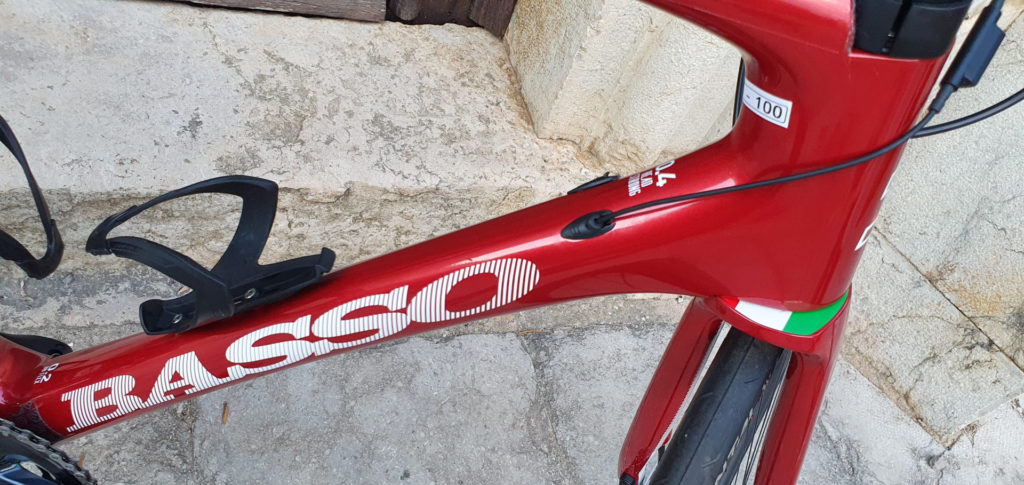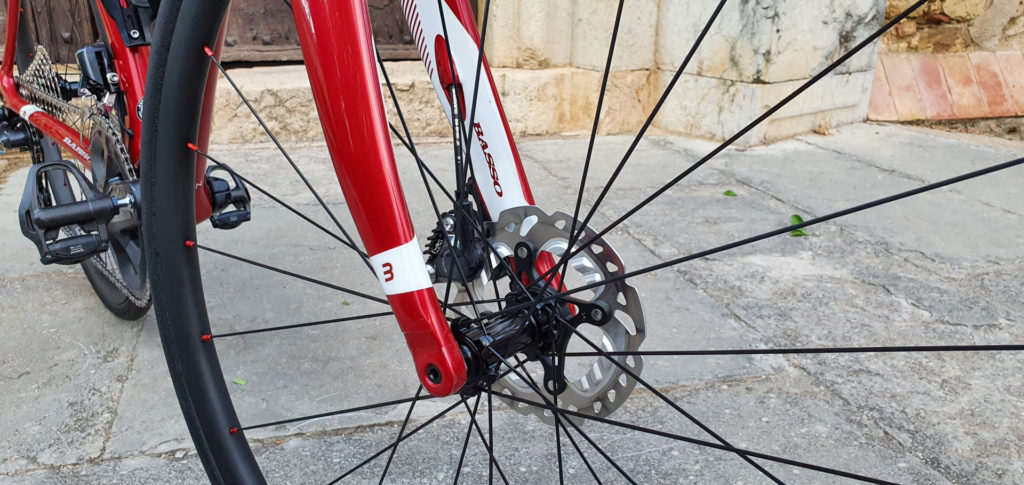Picos de Europa Cycling Tour
Riding Days
6
Number of Nights
5
Total Distance
430km
Total Climbing
8,400 metres
Difficulty
3/5
At a Glance
Picos de Europa Cycling Tour has been designed to offer a unique place to place route taking in this lesser-known area of Spain. Spain is synonymous with the touristy 'Costas' along the Mediterranean coast or the hot and dusty plains of the interior, few people venture to the mountainous area along the northern coast. This tour will allow you to explore this dramatic region and ride some of the climbs which regularly play out the Vuelta a España.
You'll travel through the regions of Cantabria and Asturias through lush green landscapes with awe inspiring rock formations, which will conjure up more parallels of the Italian Dolomites than of Spain. The 'Picos de Europa' is said to be named as such for ships returning after long voyages of discovery of new worlds glimpsing the European continent welcoming them back home. In this trip you'll traverse this spectacular mountain range and dive into the culture of the regions you pass through.
Tour Highlights
-
Asphalt
Book Tour
€1,400.00 – €2,695.00
Overview
Picos de Europa
We have devised a spectacular 5 night (6 ride days) route which allows you to tackle this lesser-known mountain range of northern Spain. The Picos de Europa spans three regions, Cantabria, Asturias and Castilla y Leon. The name is thought to originate from ships coming into the busy ports on the northern coast, seeing the dramatic rock ‘Peaks of Europe’ indicating they are close to their destination. The region is one of the most remote and isolated in Western Europe, and the Picos de Europa was the first National park in Spain.
The area of the Picos de Europa is very sparsely populated and is popular amongst hikers and cyclists alike for the peace and tranquillity it exudes. The Vuelta a Espana has been creating stages to play out its cycling theatre here since the race was started. Some of the best-known roads of the Vuelta are located in this region. The fearsome Angliru reputed to be the hardest climb in Europe and the magnificent Los Lagos di Covadonga which allows you breath-taking views of the Atlantic Ocean from its steep slopes. Interestingly Alberto Contador won his parting stage victory in last year’s Vuelta on the Angliru to demonstrate that there was like in the old dog despite impending retirement.
It was Contador who sealed his earlier race victory on the stage that forms part of the tour to win at Fuente Dé and take the honours in Madrid. The Vuelta was also played out on Covadonga in 2016 with Chris Froome losing time on its lower slopes to Quintana who went on to take the race in Madrid. You’ll get your own chance to experience these quiet and dramatic roads for yourself.
Food and wine
As well as the cycling, the region is rich in culinary delights with local specialities drawing from the land and also from the nearby sea.
Probably one of the most famous Spanish dishes is Fabada Asturiana, a rich stew made with the Asturian typical large white beans (fabes de la Granja), pork shoulder (llacón), morcilla, chorizo, and saffron (azafrán).
Cider and Wine
Sidra or cider, made from locally-grown apples in Asturias, has been produced here since ancient times and has long been considered the regional “wine.” It is a low-alcohol drink, which is slightly effervescent and very refreshing. It is popular all over Spain and enjoyed during the hot summer weather. In addition to sidra, Asturias has a new D.O. or Denominacion de Origen, “Cangas,” where both red and white wines are produced.
Climate
Gearing
Details
What's Included
What's not Included
Itinerary
Your La Fuga guides will meet you at Bilbao Airport and take you to your hotel in Santander. Here we will help you check in, and our mechanic will build your bike and ensure it is ready for the journey to follow. Depending on arrival time, you may be able to get in an afternoon spin to open the legs up. We’ll dine at local restaurant in Santander to sample the local hospitality over a breifing from your Tour Manager..
After a delicious breakfast you’ll drive the a short 30 minute drive out of Santander towards the hills to start the ride.
Leaving from Villacarriedo, the day will start out climbing steadily for a couple of kilometres before the first climb of Bragia, The terrain is hilly farmland very typical of Cantabria, rather than the jagged rugged peaks that you will encounter later.
The next climb of Puerto de la Matalena climbs very steadily for 17km and forms the border between the two regions of Cantabria and Castilla y Leon. We stay high on the ridge forming the regional divide and have amazing views over the surrounding mountains.
As we crest the second summit and stay in Castilla y Leon, we catch a glimpse of the reservoir of Ebro. The next 30km are almost flat as we trace the side of the lake before hitting the town of Reinosa where you start the climb of Puerto de Palombera which tops out at 1,260 metres.
From the top, it’s all downhill to the hotel at Renedo. Enjoy the immaculate roads without hardly a car in sight to cap off a great day of riding.


Today’s stage takes you into the heart of the Picos de Europa National park. Our hotel is located in the centre of the park with extraordinary views in every direction.
The ride follows exactly the Stage 17 of 2012 Vuelta a Espana which Alberto Contador went onto win after a brilliant attack on the Collado de Hoz. From the hotel, 3 climbs come in quick succession, the last of which is the spectacular Collado de Hoz. After the superb descent from the Collado de Hoz, we are into the canyons and gorges of the La Hermida, which leads to the final climb to our hotel in Fuente De.
You’ll be staying in a typical Parador hotel, typical of this part of Northern Spain. You’ll dine in the this evening and be able to enjoy the fresh mountain air to get a good night sleep.
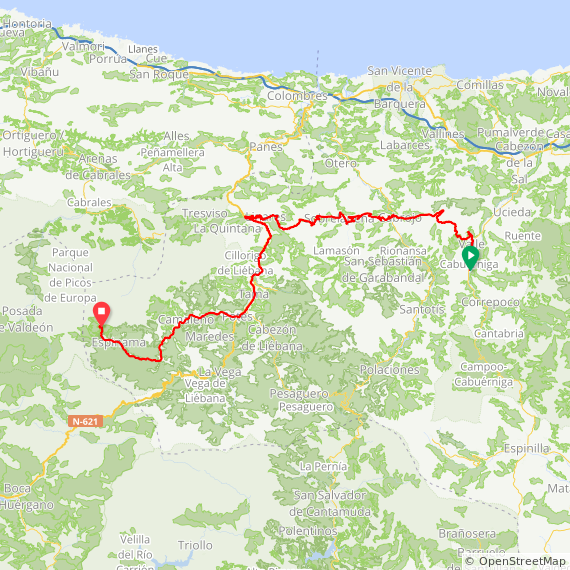

Today we head into the Picos de Europa National Park – one of the most remote wildernesses in Western Europe. The day starts nicely with a 25km descent to Potes. What goes down must come up! We’re quickly onto the 25km climb to the Puerto San Glorio.
From the San Glorio we head into the Picos National Park on a traffic-free, single-track road. The Puerto de Panderuedas, at 90 km, signals the start of the spectacular 50 km descent to our hotel in Benia de Onis.
The Los Lagos de Covadonga ride will be saved for the next day. After a long day in saddle you’ll have fresh legs tomorrow to tackle the climb.
You’ll dine in the hotel restaurant this evening, sampling another excellent Parador hospitality and local cuisine.
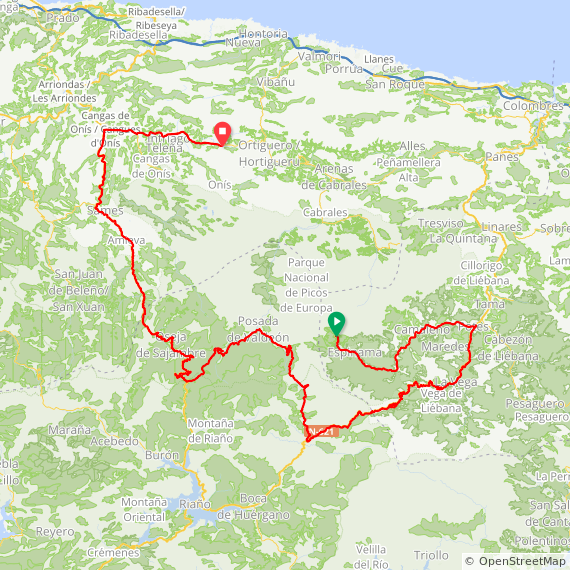

The day will start off with one of the most famous Vuelta a Espana climbs is the Los Lagos de Covadonga. It is a tough climb, but very rewarding.
When the weather is good, the climb up to Lagos de Covadonga is possibly one of the most spectacular climbs in Europe. From the summit you can view the Atlantic Ocean to the north, to the south there’s a magnificent view of the rugged peaks that form the Picos de Europa.
This is a climb that has seen Chris Froome come unstuck in the past, but it was also included in last year’s Vuelta, and he now knows how to pace himself sealing his victory on this very climb.
From Cangas de Onis we’ll take a short van ride of 30 minutes to Nava, to express a longer valley road and get directly onto the exciting parts of todays ride.
Having skipped the busier roads you’ll be treated a ride where you’ll see more animals than cars. The first climb of La Colladiella is barely wider than a car width.
You have one more climb bewteen you and the Angliru, When you get to La Vega you’ll cross the river and start the climb of La Cordial which takes you to the bottom of the Angliru.
The ride culminates in the mighty Alto de Angliru climb which was first introduced to professional cycling in 1999 to much dismay. Since then the gear ratios have got lower and riders have embraced the steep slopes resulting in the Vuelta having visited the mountain 8 times.
You can choose to descend the climb to the main road or let the vehicle take the strain after a big ride. You’ll be in Oviedo for your last night and have a great celebration meal to toast the amazing memories of the week.
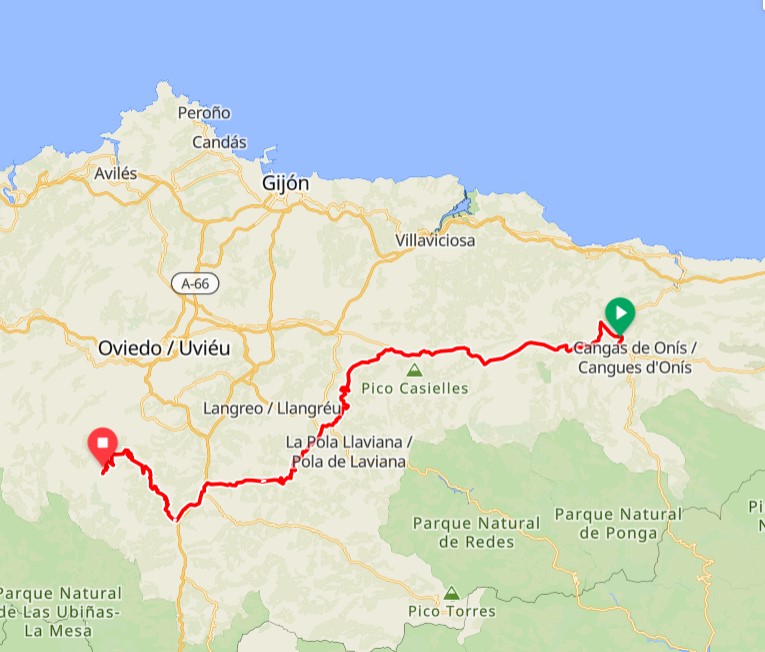
Today is the last day of our trip. There is time for a short ride in the morning, should you wish, or you could spend the morning relaxing ahead of the journey back to the airport.
Your bikes would have been packed up and ready for a departure back to the airport.
Accommodation
This impressive palace-style building offers beautiful views over Santander Bay and El Sardinero Beach.
Guests can admire views of the bay from the restaurant, elegant bar and the large cocktail terrace. Hotel Real’s award-winning El Puntal restaurant serves Cantabrian cuisine and offers a choice from over 180 wines.
The Thalassotherapy Centre at Hotel Real features a thermal circuit in a seawater swimming pool including massage jets, a sauna and Turkish bath.
This hotel is set in the heart of the Saja-Nansa Nature Reserve. Surrounded by pretty gardens in the Cabuérniga Valley, it offers a luxurious spa and outdoor pool.
The ‘Los Cantos’ spa offers a huge range of treatments and massages. You can also enjoy a sauna, Turkish bath, thermal shower and hot
We’ll eat in the hotel restaurant and sample the local dishes.
The hotel is located in the midst of the imposing rock faces and idyllic scenery of the mountains of Picos de Europa National Park.
The Parador is a gateway to enchanting forests, mountain slopes and scenic vistas that make up this natural paradise. This modern
mountain hotel is located in the district of Liébana, at the base of the cableway that climbs up to Áliva viewpoint. The interior is warm and cosy, and traditional Cantabrian dishes such as cocido lebaniego (chickpea stew) and sirloin steak with Tresviso cheese are a magnificent way to recharge after returning from an excursion in the area.
On the River Sella banks and surrounded by the spectacular Picos de Europa, in a place of incomparable beauty, the Parador de Cangas de Onís awaits you. The hotel is the old Monastery of San Pedro de Villanueva, is believed to have been founded by King Alfonso I in the 8th century.
The lounges and the river’s garden are the ideal settings for unforgettable the end of the next day of the trip.
The restaurant at the Parador serves dishes from Asturias. Specials include stew and local cheeses. There is also typical cider.
Much more than a hotel: a symbol. Much more than accommodation: the place where knowledge and talent reside. The Eurostars Hotel de La Reconquista is possibly one of the most traditional hotel establishments in Spain. Tradition, luxury, nobility and more than 200 years of history have made it an international symbol of Asturias.
Located in the heart of Oviedo. In this complex classified as a National Monument, an elegant Baroque façade announces an interior full of surprises: a 250-meter carpet covers the floor of the hall; two spectacular patios; a complete convention centre with more than 9,000 m2; an octagonal chapel designed by the architect Ventura Rodríguez; a gastronomic space, the La Regenta restaurant, which combines tradition and avant-garde; and the works of prominent Asturian painters such as Mariano Moré, Purón Sotres, Adolfo Bartolomé and Vaquero Palacio.


